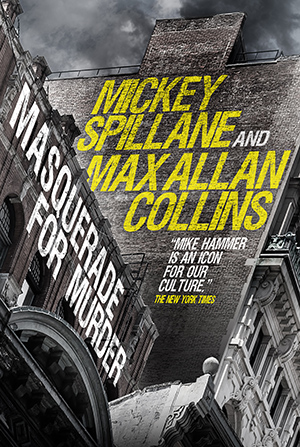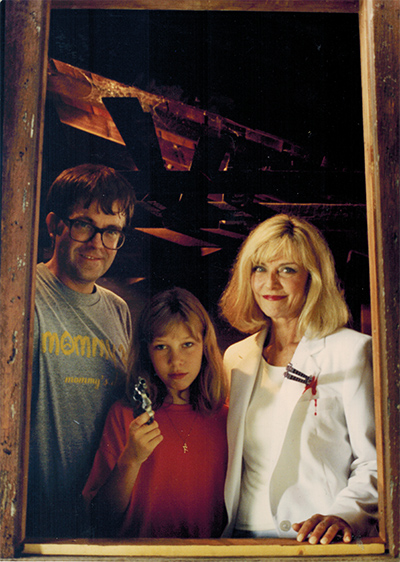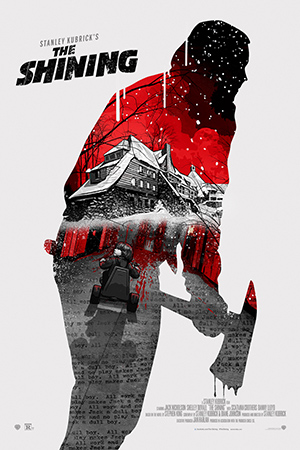Turns out I make mistakes now and then. Who’d have thunk it.
A reader tells me I mangled an entry in the bibliographic essay at the conclusion of Do No Harm, for example. I will try to correct it in the ebook, when things settle down, but for now it’s all I’ll think about when I look at that book. A small continuity error in Killing Quarry is all I see when I look at the cover of that one (the e-book has been corrected).
For those caring enough to read this weekly update, I made another mistake, although it was not exactly my (or anybody’s) fault. Turns out the new Mike Hammer, Masquerade for Murder, was published on March 17, the original announced date, and not April 7, having supposedly been postponed to that date. The audio is available, too, read by the great Stefan Rudnicki.
Now, here’s the surprise Spillane ending: the novel’s release really has been postponed till April 7…in the UK. Which sort of lessens my error, because after all the publisher is Titan, which is a British publishing house.
The bottom line is you lucky Americans can rush out and buy it now…well, you can order it online, anyway. Corona virus is doing nobody any favors – not even Smith Corona Virus. I may or may not do a book giveaway to help promote the book – I need to discuss the logistics of that with Barb.
Let me take this opportunity to discuss the new Hammer book a bit. The title of Masquerade for Murder is in line with the Stacy Keach TV movies of the ‘80s, all of which had “Murder” in their titles. This is fitting because the synopsis Mickey wrote, from which I developed the novel, was likely written for the Keach series, as was the case with Murder, My Love (the previous Hammer novel).
These two novels have in common something uncommon in Mike Hammer novels – the detective has a client in both of them. In Mickey’s famous novels, starting with I, the Jury, Hammer almost always is on a personal crusade, a vengeance hunt usually (a girl hunt in, well, The Girl Hunters). But with a TV series, Hammer couldn’t play vigilante every episode – the Darren McGavin version only has a handful of revenge plots, for example – so it’s natural Mickey might have developed these synopses with TV in mind.
The only TV synopses he wrote that became a novel written solely by him was The Killing Man, and it had Hammer personally motivated. Mickey did not submit that synopsis, by the way, considering the story “too good for TV.” (He apparently developed a synopsis for the terrible Keach-less Hammer TV movie, Come Die With Me, but only his ending was utilized.)
If Mickey was writing these synopses with television in mind, what am I doing developing novels out of them, in the case of Masquerade for Murder and the previous Murder, My Love?
Let me discuss what my procedure has been in creating novels where my famous co-author is deceased.
As I’ve reported numerous times, Mickey’s wife Jane and my wife Barb and I went on a treasure hunt – following Mickey’s directive shortly before his passing – for unfinished material in his three offices at his South Carolina home.
Our discoveries included half a dozen Mike Hammer manuscripts that represented works well in progress. These were usually 100 pages or a little more (double-spaced) and often had character and plot notes, and in a few cases endings.
Mickey had been racing to finish what he intended to be the last Mike Hammer novel, chronologically, The Goliath Bone, all but a few chapters of which were unfinished, and a roughed-out ending was there, too. But because of the terrible ticking clock he was working under, Mickey’s nearly complete draft was much shorter than usual and required fleshing out. Also, the novel had no murder mystery aspect. I provided the latter (his ending is the basis of the second to the last chapter).
A non-Hammer novel, Dead Street, existed in a nearly complete draft, a little rougher than usual but with almost everything there. Dead Street had been written in a stop-and-start fashion, however, and had some inconsistencies due to being written over a longer span of time than usual. I smoothed things out, and wrote the last several (missing) chapters.
The other five Hammers-in-progress – The Big Bang; Kiss Her Goodbye; Lady, Go Die!; Complex 90; King of the Weeds – all had individual issues for me to deal with. The Big Bang consisted of about a third of the novel in finished form, and Mickey had told me the ending; but no plot and character notes turned up. Kiss Her Goodbye existed in two substantial manuscripts that went in two different directions (different mysteries developing); a lot of plot and character notes existed. I combined the two manuscripts – removing the redundant material – and used both mysteries, weaving them together.
Lady, Go Die! was an early manuscript, an unfinished follow-up to I, the Jury which had a good chunk of manuscript – about sixty pages – but was missing the first chapter. I had set this manuscript aside until I’d completed the first three Hammers, so that I felt comfortable enough to write the first chapter of one without Spillane input – I’d been intimidated, because nobody wrote better first chapters than Mickey Spillane. And I had a Spillane first chapter for another Hammer that seemed to be a 1970s reworking of the much-earlier story, and this I was able to use about half-way through the novel, to put more Spillane content in.
Complex 90 ran around 100 pages, very polished, but also had an issue: in the opening chapter, Hammer reports his harrowing adventures in Russia to some government spooks. I decided to turn that exposition into a flashback taking Hammer to Russia and experiencing all of his exploits first-hand. So that novel is unusual because it’s mostly the middle third that represents Mickey’s work.
King of the Weeds was the most challenging, and I had held it off for last, since my initial goal was to get these six substantial Hammer novels completed (and to complete Dead Street). Mickey conceived King of the Weeds as the final Hammer (changing his mind after the Twin Towers attack, which sparked Goliath Bone). At some point he misplaced the manuscript and – this is typically Mickey – just started over.
So I had two manuscripts to combine, including two very different opening chapters (the ending he had shared with me in a late-night gab session). The other difficult aspect was that Mickey was doing a direct sequel to Black Alley, a book that at that time was out of print. I almost threw out the Black Alley sequel material, but ultimately couldn’t bring myself not to follow Mickey’s wishes. Ironically, King of the Weeds became one of the strongest of the novels.
There was more material in Mickey’s files. I had done Dead Street for Charles Ardai at Hard Case Crime, and now completed for HCC the sequel to The Delta Factor, another 100-page Spillane novel-in-progress that gave the world a second Morgan the Raider yarn.
Titan was anxious for me to continue Hammer. I had about forty or fifty pages of the novel Mickey began after Kiss Me, Deadly – a false start for The Girl Hunters with gangsters not Russian spies as the bad guys. It included Hammer traveling to Miami for an unusual change of scene and I felt had great potential. That became Kill Me, Darling.
A strong opening chapter by Mickey, plus some plot notes and his terrific ending became Murder Never Knocks. Two detailed opening chapters by Mickey became The Will to Kill. And – with Mickey’s 100th birthday in mind – I had held back about sixty pages of Mickey’s first, pre-I, the Jury (unfinished) Mike Hammer novel, Killing Town.
Mickey’s last completed novel, The Last Stand, a non-Mike Hammer, was wonderful but somewhat atypical, and rather short. So I revised an unpublished, very typical early novella, “A Bullet for Satisfaction,” and it became a sort of preamble to Mickey’s final novel, published by Hard Case Crime. Interestingly, The Last Stand is a modern-day western, and another Spillane project of mine has been to develop a novel and then series of books from an unproduced screenplay he wrote for his buddy John Wayne – the script that became The Legend of Caleb York.
And there’s been a collection of eight Hammer short stories (A Long Time Dead) developed from shorter fragments. I have also sold a handful of non-Hammer short stories, which may someday be collected.
Which brings us up to the latest Hammer novels, last year’s Murder, My Love and Masquerade for Murder. Murder, My Love is the only Hammer novel so far with no Spillane prose stirred in – strictly Mickey’s basic plot. The new book, Masquerade for Murder, came from a rather detailed synopsis, and the opening description of NYC is mostly Mickey’s, with a mini-sequence between Pat Chambers and Mike (about Hammer’s propensity for low-tech armament) that is Mickey’s as well. I feel good about how smoothly this material stirred in.
Where to now?
I have proposed three more Hammer novels, all from Spillane material. One combines two non-Hammer (but Hammer-ish) fragments, including a very different take on Dead Street; another will utilize a Hammer story Mickey developed for radio and again for TV, unproduced; and finally another synopsis apparently for a Keach-era Hammer episode.
I know some of you know all of this, but I thought it might be a good idea to get this recorded and in one place. Also, maybe it will inspire you to get hold of Masquerade for Murder, which I think is a damn good entry in this series.
I can’t express what it means to me to look over at the shelf and see Mickey’s Hammer novels residing next to the ones I’ve completed for him…and for me, the teenager in Iowa who wanted more, more, more Mike Hammer.
Speaking of short stories, Barb and I – writing as Barbara Allan, of course – have sold a short story to Ellery Queen Mystery Magazine – “What’s Wrong with Harley Quinn?” It’s not an Antiques story, but rather harks back to the kind of nasty little tale my beautiful and talented wife concocted when she was specializing in short stories.
It’s a very big deal to get published in EQMM, and we are thrilled.
With Masquerade for Murder the subject of today’s update, I am pleased to share with you this terrific review of that very novel.
The word is out about Nolan’s somewhat imminent return in Skim Deep. Read about it here.
Also, my friends at Paperback Warrior have a podcast, always interesting, which this week includes some commentary on the Nolan series.
Here’s a wonderful Ron Fortier review of the Brash Books edition of Black Hats.
Guess who’s an Irish comic book character? Michael O’Sullivan, that’s who! Check it out here.
Both yrs truly and Barbara Allan get good play on this discussion of Quad Cities area authors. Hey, what about Matthew V. Clemens?
M.A.C.













